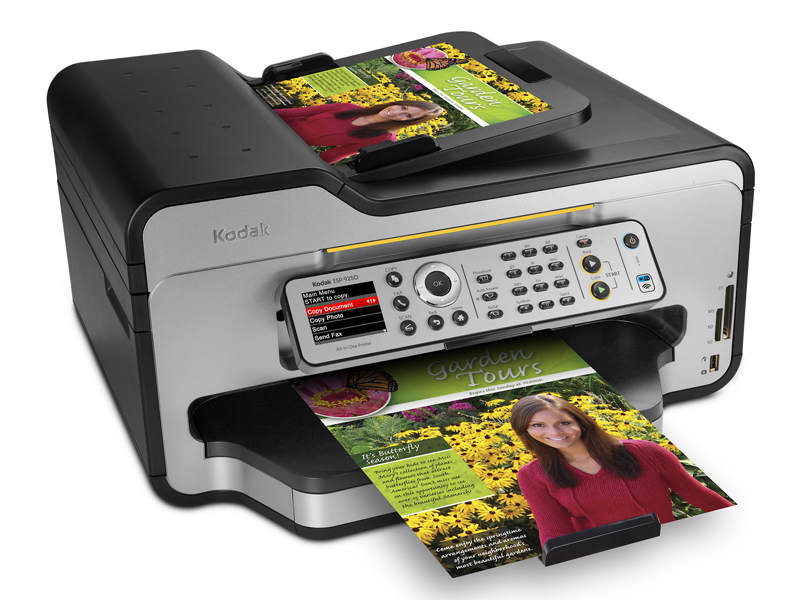TechRadar Verdict
Pros
- +
Business-class features
- +
Better value than Kodak's ESP 7250
- +
Good range of connectivity built in
- +
Only two different cartridges to keep in stock
- +
Separate postcard-sized photo cassette
Cons
- -
Expensive to buy
- -
Combined colour cartridge can be expensive if you print a lot of one colour
- -
Loud
- -
Can't print onto CDs or DVDs
- -
Photo quality is pretty poor
Why you can trust TechRadar
At the time of posting this review, Kodak was asking a whopping £300 for the ESP 9250 at its online store. Back in the real world, it's commonly available for £185 which, while still expensive, makes it just £35 more than Kodak's comparatively minimalist ESP 7250 printer.
The posher ESP 9250 still boasts identically low running costs of as little as 1.6p per mono page, 4.4p for mixed text and graphics, and about 20p for a 6x4-inch colour photo complete with shiny Kodak Ultra Premium glossy photo paper.
Other similarities include USB, Ethernet and Wi-Fi connections, a colour LCD menu/preview screen and Compact Flash, SD, Memory Stick and xD card slots, as well a PictBridge port.
Whereas the Kodak ESP 7250 is fairly well kitted out for home use, the ESP 9250 has a much more businessy approach.
There are lots more knobs and buttons to make you feel more important, and to enable full use of additional features such as the built-in fax machine, which comes complete with 30-sheet ADF (Auto Document Feeder). Naturally, the ADF is equally advantageous for photocopying multi-page documents, while you get on with other office duties.
Despite being more business-minded, the ESP 9250 isn't all hard work and makes light of domestic chores, with built-in templates for creating shopping lists as well as serving up designs for noughts and crosses games, graph paper and even sheet music.
Like its cheaper sibling, the ESP 9250 also includes an auto duplex facility for double-sided printing, which can cut paper costs down for both business and domestic printing.
The big advertising hype surrounding this and other new Kodak inkjets is that lower ink costs can save you up to £75 per year (see our ESP 7250 review for full details). The inks themselves are split between two cartridges, the first being a pigment-based black cartridge for mono text printing.
The second is a five-tank cartridge that contains pigment-based photo-black, cyan, magenta and yellow inks, plus a glossy overcoat for helping to give that shiny look on glossy papers. It all sounds good in theory, but in practice, colour ink costs can rapidly escalate if you print a lot of one particular colour, because you'll inevitably end up throwing away lots of unused ink in all the other chambers.
It's always been the downside of having a combined colour cartridge instead of individually replaceable cartridges for each colour.
Document print quality is pretty average, with reasonably sharp but not overly crisp text. Solid blocks of colour often took on a slightly mottled appearance in our tests, which was disappointing.
Surprisingly for Kodak, photo quality is the real Achilles heel of the printer, with lacklustre contrast and insipid colour rendition. Printers such as the Canon MG5150, MG6150 and Epson PX720WD give much more convincing photo output by comparison.
